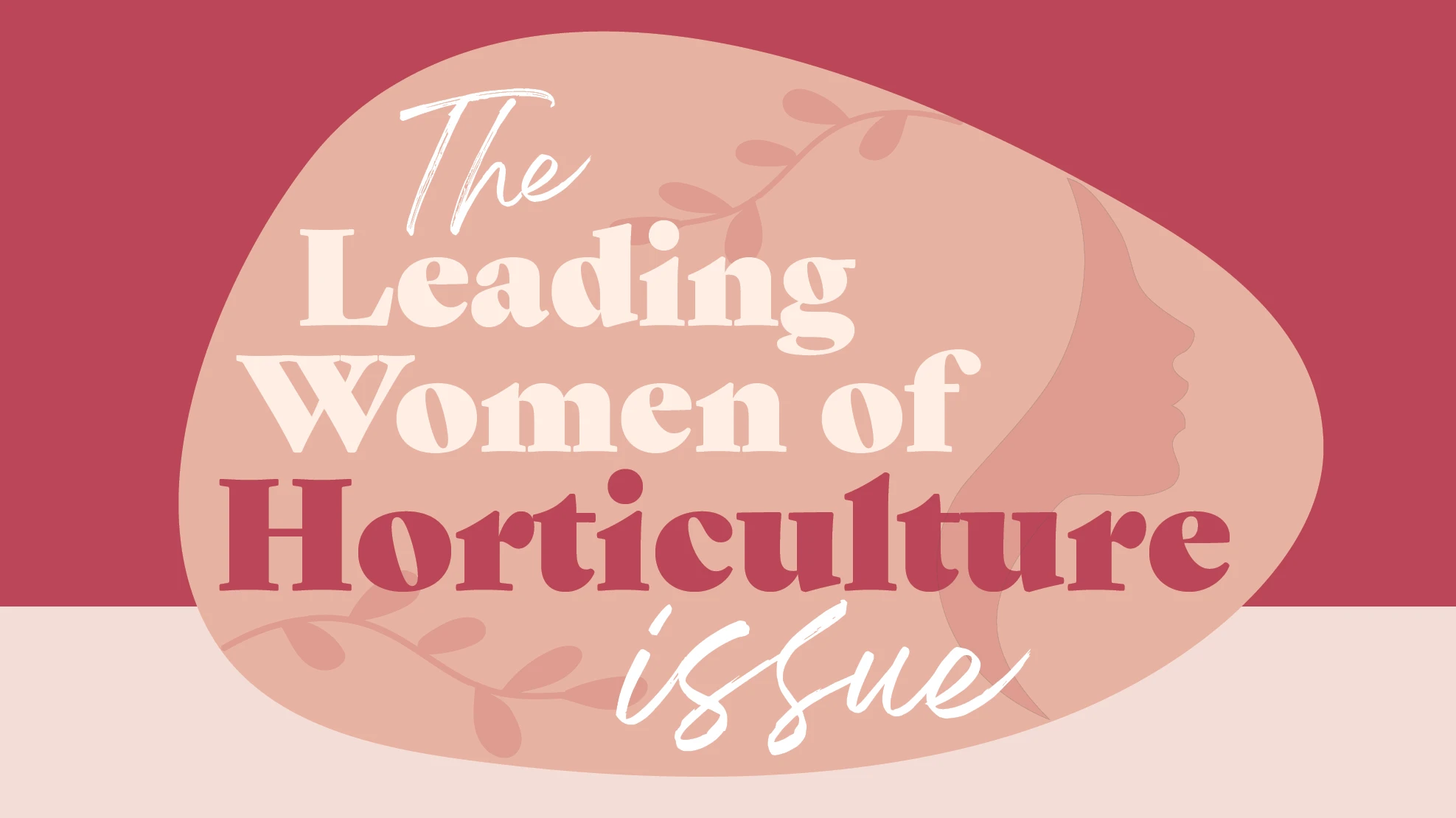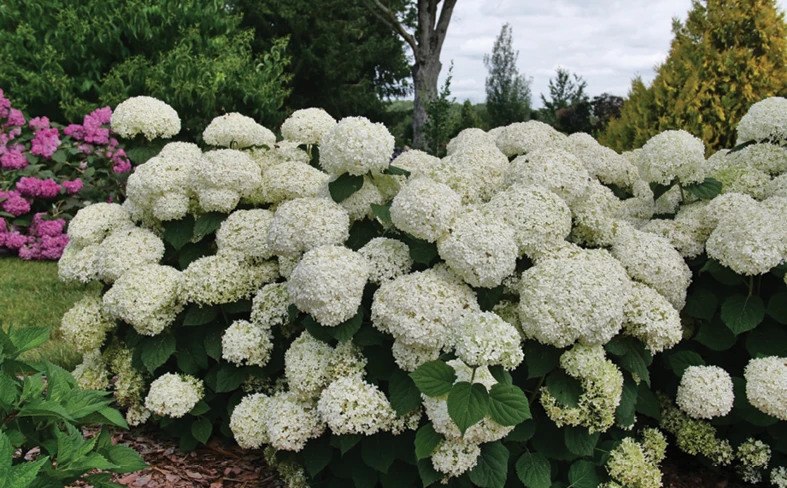 Temperatures inside the poly house are important if using CRFs during overwintering. Temperatures inside the poly house are important if using CRFs during overwintering. |
Since many ornamental plants take more than one season to reach a marketable size, growers—especially those in northern climates—must take steps to protect their crops from harsh winter conditions.
When dormant, above-ground plant parts can be quite resistant to extremely low air temperatures. In fact, some acclimated shoots and buds have reportedly survived temperatures of -320°F. However, most plants' root systems may be easily damaged by air temperatures as low as 25°F, and may be killed by sustained temperatures below 10°F. Sensitivity to cold depends on crop species and the maturity of the plant's root system.
The earth insulates the roots of plants grown in ground or in pot-in-pot systems, making these plants easier to prepare for winter than containerized plants. As long as in-ground trees and shrubs are suited for the local climate, they will naturally harden off in the fall and enter dormancy for the approaching winter. Containerized nursery stock, on the other hand, cannot endure the low temperature stress of a continental climate winter without more protection.
Acclimation and preparation
The first step in acclimating plants is preparing them for the winter. Considerations during this phase include fertilizer, water, fungicides and herbicides.
Plants that have suffered nutrient deficiencies during the summer are poor candidates for overwintering. Generally, growers should design fertilizer programs that reduce the plant's nutrient supply as the fall approaches. Excess nutrients during this stage could encourage the promotion of new vegetative shoots on some species, and these shoots may not harden off in time, making them more sensitive to cold injury. In most cases, soluble fertilizer applications should end four to six weeks before the anticipated first frost date. At this point, containers should have adequate nutrition to undergo normal acclimation.
Many growers use controlled release fertilizers (CRF) in their feeding programs. Growers should select products and rates suited to the local climate. Toward late summer, as average soil temperatures in pots decline, the supply of nutrients from spring and summer CRF applications should also decline, almost ceasing as air temperatures drop below 45°F.
Before plants can be covered, however, they need to be properly prepared by following these guidelines:
- Containers should be well watered before going into cover.
- Containers should be placed on a clean, level surface such as gravel or landscape cloth that is not subject to flooding.
- Foliage should not be overly wet right before covering.
- Fungicide treatments should be considered at this time to prevent disease build-up during storage.
- Pre-emergent herbicides are often applied in the fall to prevent proliferation of weeds during winter storage. To prevent crop injury, the application must occur at least two weeks prior to allow volatilized active ingredients to vent off before placing the plants in a greenhouse structure.
 Sweet bay magnolias next to outer wall suffered cold damage. Sweet bay magnolias next to outer wall suffered cold damage. |
Protection
As days get shorter and nights get cooler, plants go into dormancy in preparation for the long winter ahead. Ideally, the best possible protection is to cover plants once they reach a state of dormancy, and then keep temperatures cold enough to maintain this dormant state until covers are removed in the spring. A variety of cover types are available, including micro-foam blankets, hay and plastic hoop houses. Once plants are covered up, however, they cannot be ignored. Beds must be scouted periodically to track environmental conditions, plant quality and any pests. Overwintering structures are natural havens for rodents, and it is necessary to use rodent bait stations to prevent excess rodent feeding on roots and bark. Watering needs must be monitored frequently, especially if temperatures inside the poly house warm up on sunny days. Plants will slowly dry out under cover, especially evergreens and plants on the edge of beds in poly houses.
Air and soil temperature
It can be tricky to control the environment inside a poly house. On a sunny winter day, the sun can heat a poly house to temperatures 20-30ºF warmer than outside air temperatures. Conversely, since poly houses are not well-insulated, nighttime air temperatures in the poly house can easily plunge back to levels approaching the outside air temperature.
Moderate temperature extremes with these tips:
- Use small horizontal air flow fans in poly houses to help even out the temperature gap between plants on the sunny southern edge and the shaded northern end.
- If air temperatures are unseasonably warm and it is sunny out, increase ventilation by opening doors or rolling up the plastic on the sides of the house temporarily. This is a common occurrence in late winter and early spring. As an additional benefit, ventilation can prevent build-up of harmful gases from any portable-heating units used during the winter.
- In extreme climates or conditions, supplemental heating may be required to prevent root injury. Minimal heat can also prevent the collapse of poly houses during periods of heavy snowfall.
Applying CRF in the winter
Many growers choose to apply CRF to dormant crops under protective cover during the late fall through winter as labor is readily available and fertilizer can be applied before the onset of the busy spring shipping season. This strategy can be successful as long as one exercises proper caution when applying any controlled release fertilizer product to plants.
CRF maintained at constant low temperatures will hardly release any nutrients at all. Everris scientists recently took a wide variety of CRF products that had already had been activated and exposed samples to constant freezing temperatures (32ºF) for 30 days. Under these conditions, products released very low nutrient levels (between 0.5-2 percent of the total N). Likewise, soil samples containing CRF tested out at only 25-50 ppm N after being stored for 30 days at constant freezing temperatures.
Unfortunately, air temperatures in overwintering poly houses fluctuate continuously throughout the winter, commonly rising higher than 45°F in the daytime and plunging to well below freezing at night. Since most CRFs release faster at higher temperatures, warmer daytime temperatures will promote nutrient release into the root zone on a steady basis. This can lead to a slow, continuous accumulation of nutrients in plant root zones throughout the winter.
In a recent overwintering study done in Virginia, maximum air and growing media temperatures in a poly house from December through February frequently approached 70°F, even when outdoor minimum air temperatures were between 15-30°F. Growing media samples containing a variety of CRFs and stored in an unheated overwintering house yielded EC values up to 2.5 mmhos/ cm (measured in a pour-through) throughout winter.
A grower might not necessarily notice any visible injury to plants in the winter since plants are still dormant at this point. But as plants break dormancy in the following spring, the toll of unchecked high EC root injury and subsequent top injury will be apparent. The solution to this potential problem is to frequently monitor the root zone throughout the overwintering period and manage EC with irrigation if necessary to avoid plant injury. If irrigation is unavailable, winter applications of CRF are not recommended. Immediately after uncovering plants in the spring, growers should check soluble salt levels and irrigate as necessary to provide thorough leaching of any accumulated soluble salts released from CRFs during the overwintering period.
Fred Hulme is technical services director, horticulture at Everris NA Inc.; http://everris.us.com.
Get curated news on YOUR industry.
Enter your email to receive our newsletters.
Explore the November 2011 Issue
Check out more from this issue and find your next story to read.





